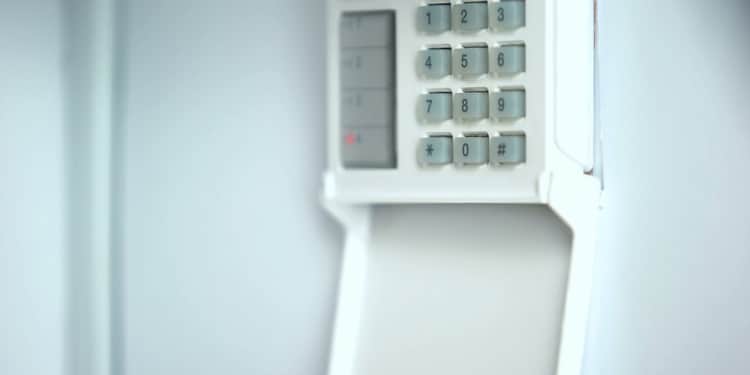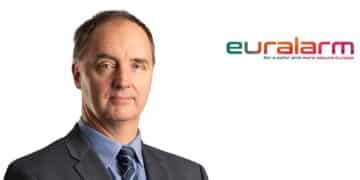At this moment the CENELEC TC79 committee on alarm systems is looking at a revision of the EN50131-1, the European system standard for intrusion and holdup systems. Euralarm is seriously involved in the revision of the standard. Why is this standard important for Europe and what are the benefits of the revision for European citizens, alarm responders, policy makers, insurance companies and for the professional security industry?
Only one chance
In order to keep Europe a safe place to live, work and travel we need to protect ourselves and our resources against burglary and robbery. Therefore, many homes and buildings are equipped with an intrusion or hold-up alarm system. The requirements for the design of these systems are laid down in the European standard EN 50131-1. While the number of buildings that are equipped with such a system increased every year, the digitization of our private and business world exploded. Technology evolved and smart homes and smart building became part of our connected world where each and every device is able to communicate with each other. Remote access, remote services, connected devices, cloud-based systems and interaction with automation system are just a few examples of today’s possibilities.
Just like fire safety systems, all security systems have one thing in common: we install them while hoping we will never need to use them. But if the system is needed ‘we only have one chance’ to detect an incident. No matter if it is a panic, holdup, fire, or intrusion we cannot afford ourselves to miss an event. Missing an event can be the difference between no incident or a major incident. The same counts for tamper or technical problems which could lead to malfunctioning of a system. Because there is only one chance in case of an event, our industry wants to ensure that the equipment used in these systems have a maximum reliability. That is why the professional security industry already for a long time manufactures and delivers products and services that comply with the EN standards. For intrusion or hold-up alarm system this is the EN 50131-1 standard.
Long history
The EN 50131 has a long history. The first version of the system standard was published in 1997 and was updated several times since then. Other standards in the EN 50131 range followed soon. Today the standard covers all aspects of intrusion and hold-up systems: from the system requirements to power supplies, intrusion detectors and pyrotechnic obscuration security devices. The advantage of a European standard is that it unifies the view on what an electronic intrusion and hold-up system is, as well as defines its functionalities and performance. The standard has helped end users, insurance companies, risk managers, installation and service companies, alarm responders and local authorities across Europe to understand what a system should do.
Since the introduction in 1997 the standard has defined the difference in requirements for low, medium and high risks. This differentiation is meant to ensure that there is a balance between measures and risks. Over the past decades, more parts were added and updated to keep the standards in line with the available technologies. To ensure a correct installation of a security system application guidelines were provided and, in most countries, professional security installers need to proof that they have the knowledge to classify the risks, choose the correct product and install the system in the proper way. Only with these requirements the security system will offer the desired reliability and will be accepted by end users, insurance companies and police response is provided.
Confidence by compliance
In order to proof that security systems and components meet the European standards, the products are tested by independent accredited laboratories. After being tested successfully the systems and components get their official EN compliant certificate. In most countries these certificates are needed to show compliance and get the product locally accepted. Some countries have additional requirements, like the PP6662 – ACPO policy in the UK or the ‘blockschloß’ functionality in Germany to meet the requirements from the local market. The confirmed compliance with the standards and technical specifications is a passport for the professional security industry in Europe and the base for the confidence in our products and services.
Evolving technology
Times are changing and technology moves forwards at high speed. More and more different types of sensors and systems become available mainly in the Do It Yourself (DIY) and IoT area. They combine home automation and energy management with intrusion, safety and security functionality. The combined functionalities are added to the ‘home hub’ to provide the end user intrusion and hold up functionality. Reporting of events is done via IP or GSM to the building owner which can cause challenges to get events transmitted on time to responders. In general, these products and services do not comply with the standards for intrusion and hold-up systems.
Meanwhile, the number of buildings that are secured in this way increases every year, while the digitization of our private and business world explodes. Technology evolves and smart homes and smart building are becoming part of our connected world where each and every device is able to communicate with each other. Remote access, remote services, connected devices, cloud-based systems and interaction with automation system are just a few examples of today’s possibilities. This trend towards digitization is inevitably accompanied by a risk of cyber-attacks. This evolution requires a revision of the EN 50131-1.
Significant contributions
Therefore, Euralarm took the initiative in 2020 to organize an open round-table to describe its vision on the future of the security standard. The outcome of the round-table discussion was that the standard should address a set of components complemented by a proposal bringing some nuance to the original 2 options. These outcomes have been presented to the working group in charge of this revision. Another significant contribution has been the proposal for the structure of the revised standard based on the 5 essential functions of an intruder and hold-up alarm system (detection, control and indication, notification, power supply and interaction with other systems) and considering the 4 performance aspects: effectiveness, reliability, robustness and resilience. Very recently, Euralarm fed the standardisation working group with substantial proposals for drawings depicting the boundaries of the system and a style for writing the content of the new standard.
Call upon stakeholders
Going forwards Euralarm wants to ensure that the updated standards on one side include the use of new technologies and on the other side continue to ensure that the product, installation and services meet a set of functionalities and qualities and perform as expected in case of an event. This will give users the best insurance that their system works as they expect and that it does not miss any events. Euralarm also believes that the revision will have significant impact on the other standards and therefore suggest to establish, when achievable, a roadmap for the corresponding revision of these other standards. In particular, the revision of the EN 50131 product standards should be refrained until the content of the revised EN 50131-1 is stabilised.
Euralarm calls upon all stakeholders – insurance companies, risk managers, installation and service companies, alarm responders and local authorities – to join the work from Euralarm and its members and participate in the different working groups from TC79. Together with stakeholders on European or on national level we can keep Europe a safe and secure place to live, work and travel.






